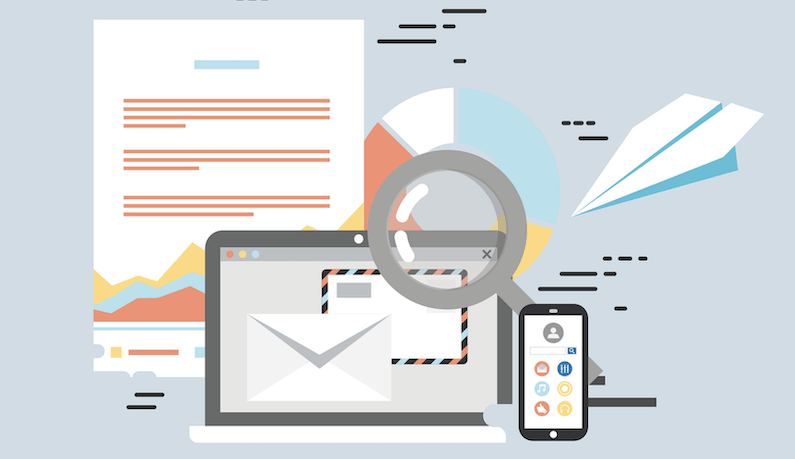Do you know how to run an effective email marketing campaign?
With around 269 billion emails sent every day, many brands compete for the same audience. Based on this number, we understand that it’s essential to know how to do email marketing right.
With this guide, we will explore all the steps you need to take to achieve the best results and keep your subscribers’ interest. So let’s begin.
What Is an Email Marketing Campaign?
An email marketing campaign is an email or a sequence of emails sent from a business to one or more recipients. A successful email marketing campaign should get users to take action and engage with your content.
Running an email marketing campaign needs some preparation to generate leads and sales successfully when you hit send. So, let’s find out how to craft your next campaign that will skyrocket your growth.
Build a Targeted Email List
The foundation of an effective email marketing campaign is an email list with qualified leads interested in your product or service.
Converting your visitors into subscribers is the best way to build a highly targeted email list. In reality, only 20% of your traffic signs up for your newsletter. So how can you increase this percentage?
To get visitors on your email list, you will need to create pop-ups. Pop-ups are opt-in forms that attract the viewer and encourage them to take action. Many marketers combine this method with lead magnets to create an incentive for the visitor.
Different kinds of pop-ups can help you grab someone’s email. The most popular ones are:
- Exit-intent pop-ups
- Click-activated pop-ups
- Opt-in bars
- Interactive pop-ups
Pop-ups are great to build your email list but keep in mind that you have to use them wisely to avoid spamming people.
Understand Your Goals
Every marketing campaign needs to follow specific guidelines and have some objectives. Map what you want to achieve and create goals that will keep you on the right track later on.
When it comes to email marketing, some typical goals are:
- Engaging with new subscribers, telling them about your values
- Build stronger relationships through content (webinars, blog posts, etc.)
- Nurturing existing subscribers providing something of value to them
- Re-engaging subscribers who haven’t been active
- Segmenting your subscribers to focus on more personalized content
Know Your Audience
To create engaging content that subscribers are thrilled to read, you need to know your audience. You have to understand their pain points, their objections, and what they love.
There are different tools like Google Analytics and Facebook Insights for this reason. An excellent method is to pay attention to your reviews and your sales team’s questions from potential customers.
By doing that consistently, you can craft content that your readers will love and be more than happy to share with their friends. Combine these methods and craft your buyer personas based on demographics, age, interests, and questions.
That’s a great starting point for crafting successful email marketing campaigns.
Email Types you can send
You have your list, you identified your goals, and you know your audience. Now what? It’s time to explore the different types of emails you can send.
There are 3 main types of emails that you can send to your audience:
- Promotional emails which include offers and promote your brand
- Relational emails focus on providing your audience what you promised (weekly newsletter, gift, ebook, information, etc.)
- Transactional emails include signup confirmations, welcome messages, order confirmations, etc.
Now that we’ve covered the email types, we can proceed to the next step, planning your emails.
Plan Emails and Followups
Planning your emails and followups is essential when you want to create a successful campaign. That’s because email marketing is multidimensional and depends on various elements to be effective.
A good approach is to note down:
- Email frequency
- Type of email
- Content ideas
- The main path you want subscribers to take (such as signing up for a webinar, following you on social media, buying a product)
When you craft your emails, you want to make them time relevant, engaging, and valuable.
Suppose you don’t know where to start following the lead of big brands. Most companies begin with a welcome sequence that introduces the new subscribers to the brand’s values and helps them find popular products or services.
After that, stick to a schedule and try to add value to your email list so that you convert readers into loyal customers.
Leverage an Email Marketing Provider

There are several email marketing providers online that have toolkits to make your life easier. Nowadays, some features can transform a mediocre campaign into a special one. When you choose your email marketing service, look for features like:
- Easy campaign creation with drag and drop builders, including workflows and templates.
- Integrations with popular software you already use, like WordPress and Shopify.
- Audience Segmentation.
- Analytics on email campaign performance.
All these components help take your email marketing campaigns to the next level with email automation. Now you have all you need to craft your next campaign. Or not?
Craft Your Subject Line, Copy and Call-to-Action
Everything is set. The only missing piece you need now is the actual email. The most crucial part of an email is the subject line because it’s the first thing people will see in their inboxes.
If your subject line is weak, people will not continue to the rest of your copy. An email subject line has to grab the attention, like the headline on a blog post, so that people want to go further.
You don’t have many words to make an impression. Use between 40-50 characters and make it precise.
Options for improving your subject lines include:
- Tell people what they’ll get when they open your emails
- Add personalization, including people’s names and locations, to keep them more engaged.
- Avoid spam words and salesy words.
The email copy is the next element that crafts an email. Remember to start with a hook so that you keep them engaged. Keep your copy short, precise and avoid pitching your audience too early.
Many brands use the power of storytelling as part of their strategy. A personal story can create an emotional connection with a brand, leading to a stronger relationship.
Apart from stories, you can share funny behind-the-scenes moments, videos, and gifs and highlight your brand’s personality.
All in all, there are many different ways to approach an email, and you have to think what are the elements that best describe your company.
The last thing we need to add is a call-to-action that will encourage your subscribers to take action. CTAs can appear multiple times in an email copy but avoid putting it at the beginning.
The best calls to action have active verbs, are short and precise. Having an excellent copy and a strong CTA should be a no-brainer for subscribers to click your links.
Test and Track your Campaigns
Achieving email marketing success is more than sending an email campaign. You need to understand what works and how to change the elements that ruin your emails.
That means testing will become part of your life. You can test almost everything: design, layout, copy, subject lines, and CTA.
Apart from that, you can track your open rates and click-through rates to have a deeper understanding of your audience. Once you find out what works, create content and test again.
A pro tip here would always be to check your list’s health and keep only the people interested in what you offer.
Take care of your email subscriber list by attempting to re-engage inactive subscribers and remove them if your attempts fail. It’s better for email marketing to have fewer active subscribers than large numbers of inactive ones.
The Takeaway
Email marketing is an effective tool in your arsenal to increase your revenue and build trust with your customer base. Creating a successful campaign means that you need to follow each step above to ensure that every element is in place.
Remember to set goals before you begin and understand what your audience wants to hear from you. Plan your emails and craft your subject line and the email copy following the article’s guidelines.
I want to hear from you in the comments section and tell me which of the steps above did you find the more crucial for your email campaigns’ success.
Until the next one, keep sending.










